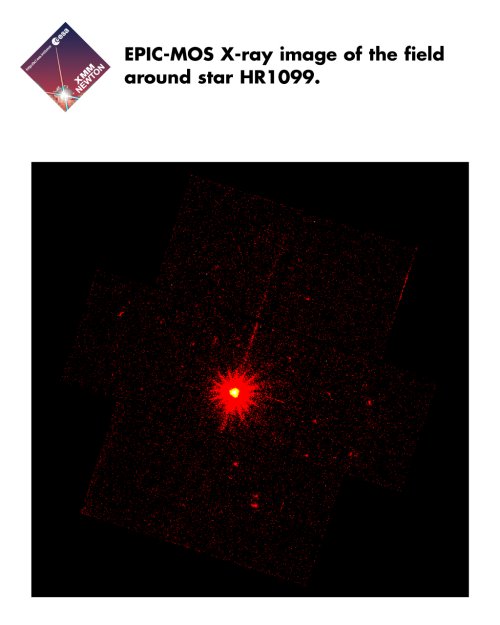XMM-Newton MOS First Light - HR1099

Image and text courtesy of ESA
EPIC-MOS X-ray image of the field around star HR1099
X-ray image of the field around the bright star HR1099. This X-ray image also illustrates the collecting power of XMM, as many of the other X-ray sources in the image were hitherto unknown, or allow more detailed studies of these objects than before. HR1099 is a nearby star with a hot corona which is very active in X-rays. Get the high resolution version.
HR1099 in an infernal waltz
HR 1099 is a sixth magnitude star located about a 100 light years from the Sun only just visible to the naked eye. Its formidable brightness in the EPIC-MOS image conceals in fact a binary pair. Whereas our Sun rotates in 30 days, these two stars are whizzing around each other in only 3 days.
The rapid motion causes a kind of infernal dynamo, twisting the stars' magnetic fields into contorted shapes. If one star resembles our own Sun, its partner is infinitely more active than our Sun. It is the scene of intense stellar flares and storms which astronomers believe are due to the release of magnetic energy as the fields untwist. Measuring the phenomena that are present greatly helps us understand the way our own Sun functions and its effects upon us. Again this X-ray image reveals many serendipitous sources, hitherto unknown.
If you have any questions concerning XMM-Newton send email to xmmhelp@athena.gsfc.nasa.gov



